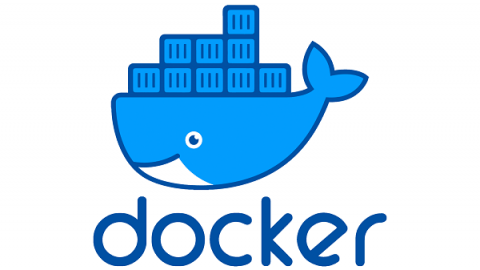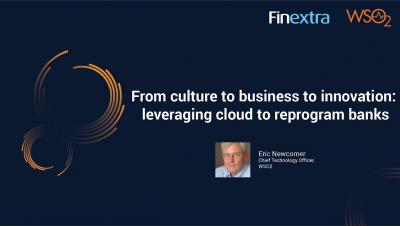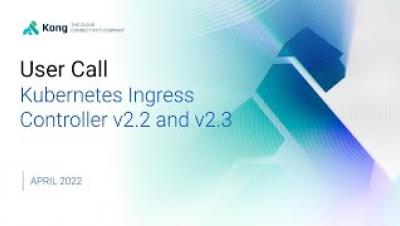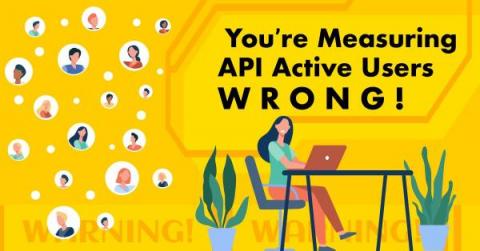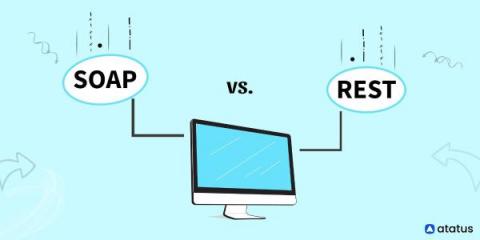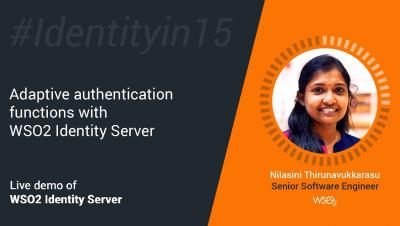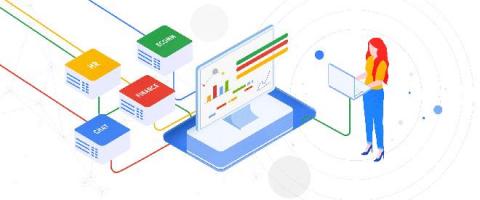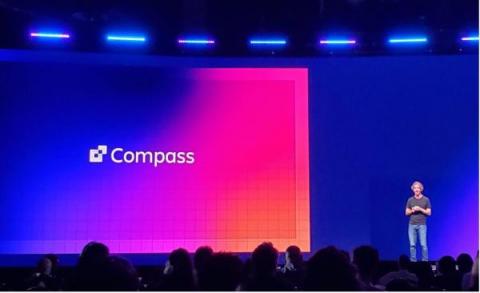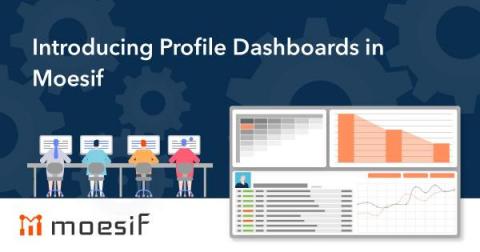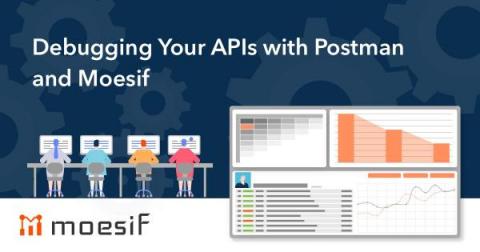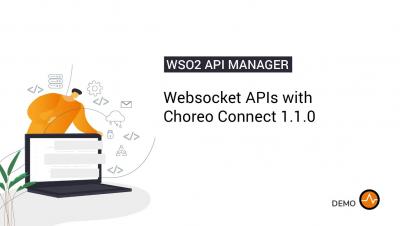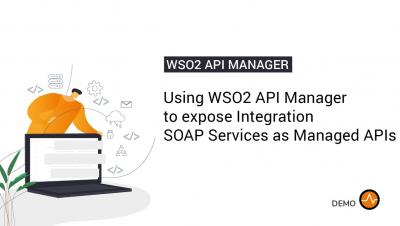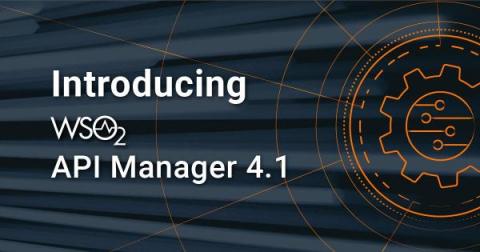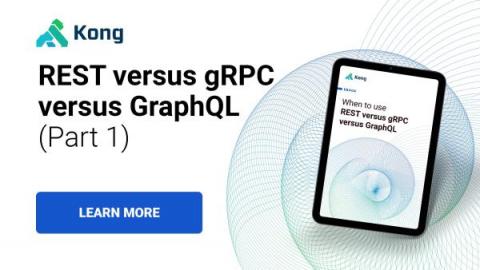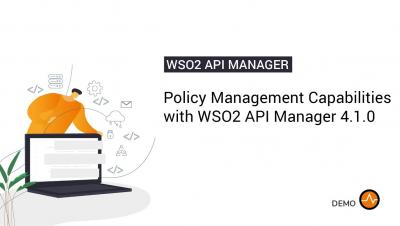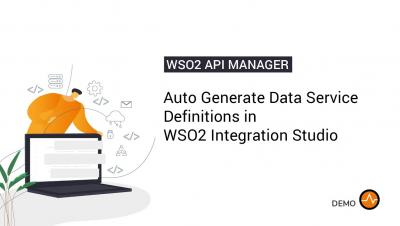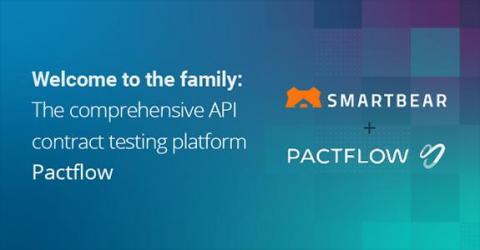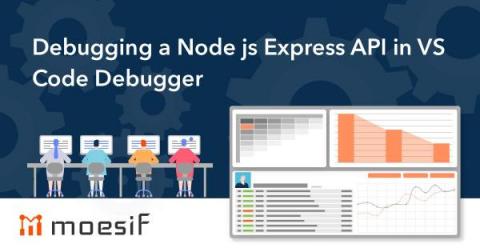Systems | Development | Analytics | API | Testing
April 2022
Understanding the new Kubernetes Gateway API vs Ingress
Getting Started With Docker Compose and Speedscale CLI
Observability, introspection, logging, and dependency mapping are critical when building APIs. With the advent of microservice architecture, understanding what happens inside your container is vital during development. Speedscale CLI is a container-centric tool that allows you to monitor inbound and outbound traffic. With Speedscale CLI, you can monitor raw requests, latency, encoding, and detected technologies.
Webhook security: Four risk scenarios and how to secure webhooks
A few weeks ago we talked about webhook integration and briefly mentioned webhook security as one of the key points to consider in this context. I feel like today we can dive deeper into this topic.
Why You Need to Think about API Automation and Scalability
First published on The New Stack. The pandemic has accelerated the shift towards digital channels for banking, retail, and a host of other services. As a result, businesses are shifting their digital transformation initiatives into overdrive in order to meet customer demand for online interactions, which should be both inviting and secure. APIs act as key drivers behind most successful digital enterprises.
Introduction to API Gateways and Microgateways
An API gateway lets API calls enter and leave to reach their corresponding destination points, better known as microservices, in a system. An API gateway is mainly responsible for routing API calls. Its secondary responsibilities include security, caching, load balancing, rate-limiting, dynamic discovery and routing, management, and scaling the number API calls.
Using FIDO for Multifactor authentication with WSO2 Identity Server
Modernizing the Future of Finance: A Kong-versation With Finastra
Finastra has ambitious goals – to open up the world of finance. As Joey White, SVP of technology for Finastra, says, “The future of finance is open. All of the currently closed systems within banking will need to open to serve a digital future.” To him, open means understanding what you don’t know, specifically, the particular modality of use and that change is the only constant.
From culture to business to innovation: leveraging cloud to reprogram banks, WSO2 | Finextra
Kubernetes Ingress Controller v2.2 and v2.3
Using APIs to Build Robust Cloud-Native Infrastructures
You Are Measuring API Active Users Wrong
API providers need to understand how their consumers are using their APIs. Usage metrics are essential because they tell you about API adoption, how your API is growing over time, and which endpoints are seeing more (or less) use. When you look at API usage metrics, you should be measuring the active users on your API in the sense that most closely aligns with your service.
The Stripe Developer Experience and Docs Teardown
In this article, we are going to explore why the Stripe developer experience is so passionately supported by thousands of developers globally. One of Stripe’s missions is to increase the GDP of the internet, and over the last decade, they’ve successfully executed 250 million API requests per day and over 91 billion requests per year through their APIs.
Revamping the CIAM Experience at IDEXX
Since 1983, IDEXX Laboratories has provided hardware for in-house diagnostics for veterinarians to conduct tests on samples. The company also provides a reference laboratory service to test samples. It is headquartered in Maine, USA, and has offices in the Netherlands.
CLI Installer
While new cloud native architectures are incredibly feature-rich, they can come with a high barrier to entry. Many getting started tutorials are pages long and can take forever to complete. But these always start with the first step of performing an installation. In the spirit of making the installation of Speedscale as simple as possible, we have designed a new interactive installer as part of the speedctl command line interface.
Reprogramming the bank: Shifting gears on digital disruption, WSO2 | Finextra
The People Behind the Process: Software's Greatest Asset
Our new podcast, "The People Behind Your Favorite Apps," shines the spotlight on the developers, testers, and others who work tirelessly to bring amazing technologies to market. How they come up with solutions to big challenges, collaborate at scale, and deal with high-pressure deadlines and increased expectations from the business and customers alike.
API Design Is Communication: How to Build APIs People Will Love
Embedded iPaaS: Implementation types, features, pros and cons
The significance of embedded iPaaS has significantly risen in the past months. This can be easily seen by reviewing the search volume for the keyword “embedded iPaaS” – if in October 2019, for example, there were only a handful of queries for this term, by the first quarter of 2022, the search volume has increased by 1500%. Yes, you’re reading it right, this is not a typo – by one thousand five hundred percent.
Shifting Up: Achieving Progressive Delivery with both shift-left and shift-right approaches
There's a transformation happening in software development: Progressive Delivery. It lets you rapidly release updated apps while still maintaining quality and control. Better still, it can have a big impact on the job satisfaction and day-to-day experience of developers. At SmartBear, we're in a unique position with this change happening in the market. We have a range of tools that improve the quality of software development, aiding management, design, testing, and observability.
Identity and Access Management in the Healthcare Industry
Image credits: Julia Sowells With the onset of the COVID pandemic in 2020, the use of telemedicine and telehealth services has soared. An article by McKinsey estimated that in 2021, the use of telehealth was 38 times higher than pre-COVID years.
WSO2 Wins Long Term Contract with Premier British Household Brand Central England Co-operative
SOAP vs. REST: What's the Difference?
Numerous technologies underpin the web services we use daily. Web APIs are an essential component of the internet world. A web browser or a web server can use an API. When writing web code, developers must select the Web API that best fits the needs of their project. Web APIs come in a variety of forms. They enable two applications to communicate with one another using a set of rules.
Five Keys for Effective API Management
From banks and healthcare providers to retail enterprises and government agencies, application programming interfaces (APIs) live at the heart of many systems. They have become critical to drive digital initiatives and bring a host of benefits — such as the ability to use APIs created by others; compose enterprise capabilities as reusable units to create new sources of revenue; enable better interactions with customers, suppliers, and providers; and quickly respond to compliance requirements.
With Identity Management, Start Early for Less Tech Debt
First published on The New Stack. A problem starts to reveal itself. The team has finished a minimum viable product’s (MVP) business features, and user personally identifiable information (PII) has merged into the same domain as other core objects. Social logins bring their own attributes that need to be captured but don’t line up.
Adaptive authentication functions with WSO2 Identity Server
7 trends to watch in the API economy
Organizations across every industry are aiming to achieve digital transformation initiatives to stay competitive, which increasingly include overcoming the complexity of hybrid and multicloud environments. With resources stretched and margins getting thinner, application programming interfaces (APIs) and the API economy will continue to play a critical role in connecting services, applications, and clouds. So, what do you need to know to help your organization continue to thrive?
Common Uses of APIs that Drive Innovation and Allow for Business Agility
What's the Difference Between Continuous Integration and Continuous Deployment Software?
First dedicated AI management and MLOps platform on Google Cloud Marketplace
Similar to the momentum that cloud technology has had in the business world, AI and machine learning are quickly becoming essential to the enterprise. 86% of companies now view AI as a “mainstream technology,” and corporate AI adoption rose 50% in 2021 from the year prior for initiatives such as service-operations optimization and product enhancement.
Technology and The Essential Elements of Business Transformation
Creating event-based architecture on top of existing API ecosystem
Is it possible to create an event-based architecture on top of the existing API ecosystem? We are all creatures of convenience.
SmartBear at Atlassian Team '22
Major technology events are back, and so are we. The Atlassian Team ‘22 event in Las Vegas happened last week and we were thrilled to attend in person. And usually, what happens in Vegas stays in Vegas. But today, we’re talking all about what took place, who was there, and how we participated. So, what were the most memorable moments at Atlassian Team ‘22? Read on to find out.
Introducing Profile Dashboards in Moesif
We are excited to announce that Profile Dashboards are now live within Moesif! We have designed Profile Dashboards to enable customer-facing teams with a convenient way to monitor and analyze your customer’s account health. This new feature provides customer specific information in an easy and consistent fashion. Profile Dashboards allow you to see a personalized dashboard for specific users and companies.
How to Use Laravel to Create a GraphQL API
GraphQL is a comprehensive approach to guiding software developers in constructing data-driven applications. It is sometimes referred to be a platform or programming language agnostic query language. It is, in our opinion, the new API standard, allowing client applications to request particular data from the database rather than a full record. This article will teach you some of the core ideas needed to create a GraphQL API that uses Laravel.
GraphQL Subscription support for WSO2 API Manager via WebSockets
How Uses of Microservices Can Benefit Businesses
Debugging Your APIs with Postman and Moesif
Debugging APIs can be a challenge for any developer dealing with RESTful APIs. Trying to create an exact API request, especially for highly complex requests with large API request bodies and multiple headers, is essential but also tough to do. By using a tool like Postman to create a request for debugging purposes and as an API client, you can easily replay an API request with the exact configuration of the original request.
Websocket APIs withChoreo Connect 1.1.0
Viewing data sources from the WSO2 Micro Integrator Dashboard
Top-Down approach to create Managed APIs (API first approach)
Using WSO2 API Manager to expose Integration SOAP Services as Managed APIs
Third Party API support feature in WSO2 API Manager 4.1
What Is AWS? Modern Technology Fueling Digital Transformation
Introducing WSO2 API Manager 4.1
We’re excited to announce that WSO2 API Manager 4.1—a complete platform for building, integrating, and exposing digital services as managed APIs in any environment—is now available. This release improves productivity in development and operations, expands support for different protocols and third-party technologies, and completes the product’s analytics story.
How to implement GraphQL with Flutter + GraphQL example
Have you ever faced the task of implementing a REST API and had to call multiple endpoints to populate data for a single screen? You probably wished you had more control over the data returned by the endpoint so that you could fetch more data with a single endpoint call or have only the necessary data fields returned by the call. Follow along to see how you can achieve this with GraphQL. In this article, we’ll be implementing GraphQL in an existing codebase.
When to use REST versus gRPC versus GraphQL (Part 2)
In our previous post, we discussed the benefits and drawbacks of two of the most popular API models – REST and gRPC. In this post, we’ll highlight the final API model in our series, GraphQL. Finally, we’ll recap our learnings with a side-by-side comparison of REST, gRPC and GraphQL.
Policy Management Capabilities with WSO2 API Manager 4.1.0
Auto generate data service definitions in WSO2 Integration Studio
Enable Tenant Configuration menu in Admin portal
Keep A Pulse on Your Account Health with Profile View
The Moesif product team has been staying very busy as of late! We have been listening to our partners and gathering feedback, and what we have heard is an outpouring of requests for new tooling that provides a 360-degree-vantage-point into your customers’ account health. As a result, we are very excited to announce that we have released our newest feature: Profile Dash View.
Kubernetes Load Test Tutorial
In this blog post we use podtato-head to demonstrate how to load test kubernetes microservices and how Speedscale can help understand the relationships between them. No, that's not a typo, podtato-head is an example microservices app from the CNCF Technical Advisory Group for Application Delivery, along with instructions on how to deploy it in numerous different ways. There are more than 10 delivery examples, you will surely learn something by going through the project. We liked it so much we forked the repo to contribute our improvements.
ERP integration guide | Common scenarios, challenges, methods
The phrase “We are only as strong as we are united, as weak as we are divided”, though coming from the fictional Albus Dumbldore character in the Harry Potter saga, can also perfectly illustrate the importance of ERP integration to companies. An ERP system is often considered to be the backbone of an enterprise whether it is an eCommerce, supply chain, manufacturing or healthcare business.
What is API Integration and How Can it Help Your Business?
SmartBear Acquires Pactflow Delivering First Key Milestone in Defining Next Generation API Development Platform
Scaling Microservices with Contract Testing and Pactflow
API growth continues to rise within the modern enterprise. Microservices, are a leading growth driver for APIs as development teams continue to break down monolithic systems, seeking to capitalize on the advantages of decoupled capabilities. Benefits such as reduced costs, reduced time-to-market, faster release cycles and decentralized evolvability are possible. However, as APIs become increasingly prolific and central to core business functions, such benefits do not always linearly scale.
The SmartBear API Platform: Driving Quality, Consistency, and Collaboration Across Your Development Workflow
APIs have never been more instrumental in business. Organizations use them to deepen partnerships, accelerate development, integrate capabilities, and generate revenue. These business drivers, combined with the rise of microservices, drive incredible growth in the API space. According to the most recent State of Software Quality API report, 61% of survey respondents chose microservices as the technology that will most likely drive API growth.
Postman Load Test Tutorial
In this load test tutorial, you’ll learn how to use Postman for small-scale API testing. You’ll also learn about some shortcomings and challenges of the framework that can be solved by using a tool like Speedscale. Because HTTP services don’t have a graphical user interface, you’re forced to test web APIs by simulating requests from a known client so that you can control the traffic data.
The next level of the CIAM journey towards digital transformation from Level 0/2
Anybody interested in providing products and services to consumers dreams of building a start-up. For any entrepreneur who aspires to create a market-leading product, this is the first step. In the post-covid pandemic era, you may easily start a digital business by simply creating a website. However, exposing all of your services and products on an internet platform has become a requirement. You will not be able to survive in the market if you do not do so.
Argo Use Cases for GitOps & ML | Henrik Blixt | Intuit | Kongcast Episode 14
How to use the Ably Control API GitHub Action
Argo Use Cases for GitOps & ML
In this Kongcast episode, Henrik Blixt, Product Manager for Argo at Intuit, gives an introduction to Argo, an open source tool for Kubernetes and incubating project of CNCF. Check out the transcript and video from our conversation below, and be sure to subscribe to get email alerts for the latest new episodes.
API Monetization Strategy: Generate Revenue from your API
12 New Application Integration Statistics and Trends for 2022
Once in a while, I embark on an extensive research about the most fresh, up-to-date statistics around the application integration / system integration sector. Knowing what integration issues companies face nowadays helps better understand our potential customer pain points and needs, shape a better offer and align our product map with the most current requirements.
API vs Webhooks in Application Integration
DreamFactory 4.11.0 has been released!
Debugging a Node js Express API in VS Code Debugger
When we create software, we rarely do it without errors. API creation isn’t exempt from this fact, so sooner or later we’ll need to debug it. In JavaScript, the first stop for a debugging task is often logging to the console, but using a debugger can give us a more integrated experience. Node js is a cross platform and open source JavaScript runtime environment that allows the JavaScript to be run on the server-side.




